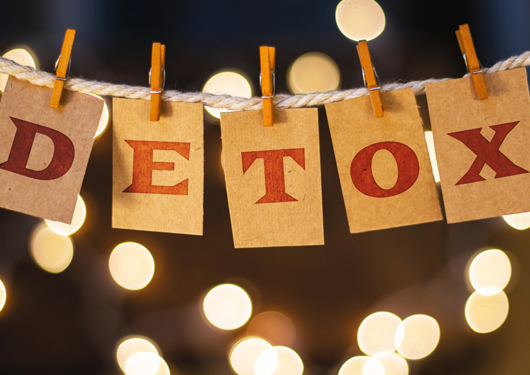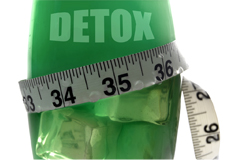


Toxic metals exist everywhere on the earth and they affect people’s health. Nowadays, toxic metals have become a major cause of illness, aging and even genetic defects. Although the focus of detoxification is on heavy metals, the high-polluting substances of the body, detox does not limit to heavy metal detoxification. Detox targets all toxic metals in the body.
The environment pollution is currently a serious problem in China. Chinese people are chronically exposed to a high level of toxic metals from air, water, food, plants and animals during their daily lives. The detox treatment is therefore very necessary for their health.
Although toxic metals cannot be completely avoided, we can minimize our exposure to them with a carful diet and a healthy lifestyle. Our body has effective mechanisms to eliminate such toxic metals, which can be supported and enhanced with a personalized nutritional balancing program and adequate medication by our medical specialists.

Because toxic metals often accumulate deep within body tissues and organs, it is not easy to detect them. The existing tests and analysis for toxic metals include blood tests, urine and feces challenge test, and hair mineral analysis.
Blood tests. Toxic metals quickly move from the blood to the tissues. So blood tests must be done soon after an exposure, usually within days or weeks.
Urine and feces challenge tests. Toxic metals can be identified from the results of urine and feces challenge test.
Hair mineral analysis. As an excretory tissue, hair accumulates many toxic metals. This means that anything that goes into the hair will be eliminated from the body.

Toxic metals comprise a group of minerals that have no known function in the body. Such minerals are very harmful to plant, animal and human bodies. Human beings are now exposed to the highest levels of these metals in recorded history.
Detoxification focuses on the extent of health problems caused by toxic metals, sources of toxic metals, symptoms, and how to remove them safely and deeply.

Human beings are exposed to the highest levels in recorded history of lead, mercury, arsenic, aluminium, copper, nickel, tin, antimony, bromine, bismuth and vanadium. Levels are up to several thousand times higher than a few hundred years ago. In specialist’s clinical experience, everyone has excessive amounts of some or all of the toxic metals.
Toxic metals replace nutrient minerals in enzyme binding sites, and then inhibit, overstimulate or otherwise alter thousands of enzymes. An affected enzyme may operate at 5% of its normal activity, which contributes to many health conditions. Toxic metals may also replace other substances in other tissue structures such as the arteries, joints, bones and muscles. These tissue structures are therefore weakened by the replacement process.
Toxic metals may also simply deposit in many sites, causing local irritation and other toxic effects. They may also support development of fungal, bacterial and viral infections that are difficult or impossible to eradicate until this cause is removed.

[:en]Lead lowers IQ and is associated with violence and many neurological problems. It also indirectly affects male reproductive and sexual function and therefore causes infertility. Lead is a widely distributed toxic metal due to its many uses in industry. It also exists in pesticides used on fruits, vegetables and many other foods, old house paint, current paint used on ships of all sizes, lubricants, medications, cosmetics such as lipstick and others, inks etc..
Mercury is extremely harmful to neurological system, which leads to attention deficit, language and memory disorders and the decrease of sports performance and sensing capability. Dental amalgam fillings are usually about half mercury. Excessive intake of food with mercury content may trigger cardiovascular and cause neurological diseases.
Arsenic and arsenide is associated with some cancers. Arsenic in drinking water may lead to bladder cancer, lung cancer and skin cancer. Arsenic inhaled in a work environment may lead to the increase of lung cancer, bowel cancer, gastric cancer and kidney cancer.
Aluminium deposits in brain, heart, liver and kidney. Aluminium deposits in brain may kill neuron, which leads to brain damage and therefore cause memory loss, slow action and accelerate aging. Aluminium mainly exists in water purified by aluminium salts and food with aluminium salts.
Cadmium is a very poisonous metal. Cadmium causes osteomalacia and osteoporosis. Long-term cadmium exposure may cause damages to kidney and reproductive system. Cadmium is widespread in the air, as it is used in brake linings of cars. It is also used in metal plating as it is a very hard substance. Cigarette and marijuana smoke increase cadmium toxicity a lot.
Fluoride is highly toxic. It is used in rat poison, water treatment chemicals and underground water. For this reason, fluoride levels in food processed with water may be very high, especially baby foods and reconstituted vegetable and fruit juices.
Medications Many prescription and over-the-counter drugs contain toxic metals. Cipro (flu quinolones) and Prozac (fluoxetine) are fluoride-containing chemicals, for example. Thiomersal, a mercury-containing preservative, is still used in many vaccines, including all flu shots.